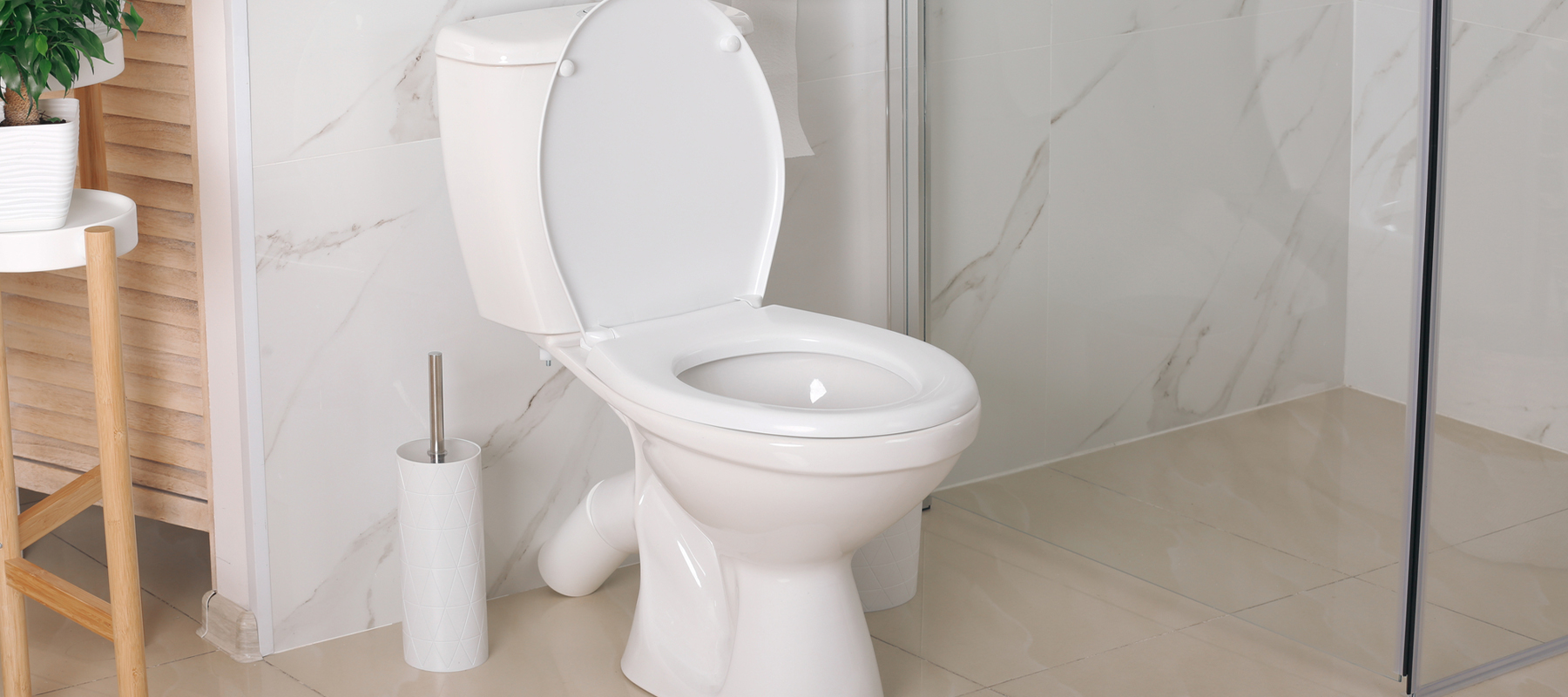Toilet Replacement Cost Guide: New Bowl & Install
Last Updated: December 27, 2023

Fact Checked By: Ryan Maguire
On This Page
As one of the most coveted seats in the house, you probably don't need to be sold on the merits of a toilet.
Many homeowners, however, are surprised by just how many options there are when it comes time to install a new toilet.
This buying guide takes a look at the different types of toilets and how much you can expect to pay for toilet replacement.
How Much Does a Toilet Replacement Cost? #
Replacing a toilet costs $150 to $750 on average including the new toilet, labor, wax ring, bolts, and disposal fees:
Toilet Costs
- Basic Toilet: $100 - $275
- Two-piece Toilet: $150 - $500
- Wall-hung Toilet: $500 - $1,500
- Smart/Bidet Toilet: $500 - $5,000
Installation Costs
- Remove & dispose old toilet: $50 - $150
- New wax ring: $5 - $15
- Additional repiping or conversions: $200+
- Plumber Hourly Rate: $45 - $150
With a mid-range toilet and basic install, expect to spend $300 - $600 total. High-end smart toilets or full bathroom re-piping add significant cost.
Prices can be lower with DIY toilet installation. However incorrect wax sealing can lead to leaks. Many opt to hire a plumber instead.

Real-World Toilet Replacement Costs #
"I had a plumber install a basic two-piece low-flow toilet to replace my leaky builder-grade model for $425 total." - Janet D., Ohio
"I upgraded from a round toilet to an elongated bowl model with soft-close seat and hand washing bidet function for $750 with professional installation." - Mark F., Illinois
"To give my kids' bathroom a fresh look, I replaced the old toilet with a trendy stand-alone wall-hung bowl model for $1,100 including alterations to the plumbing." - Jessica N., Indiana
"I finished my basement bath with a high-tech Japanese smart toilet with heated seat, LED lighting, automatic opening and closing lid, and air purification system. The luxury model plus intricate plumbing connections cost $4,500." - Robert T., Maine
Toilet Options #
Compare the following toilet types to find one that best suits your needs:
One-Piece vs. Two-Piece Toilet
In a one-piece toilet, the bowl and the tank are combined in a single unit.
A two-piece toilet, as the name implies, has a separate bowl and tank that are assembled at the time of installation.
One-piece toilets are easier to clean and typically have more of a low-profile design, while two-piece toilets are less expensive and simpler to relocate.
Flushing Style
Think all toilets flush the same way? As a matter of fact, there are three ways that toilets send water down the pipes.
The first and most common is a gravity-flush toilet, which is the type you probably have installed currently. These toilets are the most inexpensive and having few mechanical parts, are simple to repair.
A second option, the pressure-assist toilet, uses compressed air for a more powerful flush. Pressure-assist toilets are typical in commercial buildings and while quite loud, they produce a cleaner bowl.
For the latest in flush technology, opt for a vacuum-assist toilet. This toilet design has a stronger flush than a gravity-flush (though not as strong as a pressure-assist) but only costs slightly more than gravity models.
Low-Flow Toilets
If you have an older home with outdated toilets, you can save money on your water bills by installing low-flow (or low-flush) toilets.
Since 1992 the U.S. government has mandated the use of toilets that consume no more than 1.6 gallons of water per flush.
But some toilets utilize even less water each time the handle is lowered.
So-called high efficiency toilets (HETs) only use 1.28 gallons per flush (look for the EPA's "WaterSense" label). There are also dual-flush models that use about 0.8 gallons for liquid waste and 1.6 gallons for solid waste.
